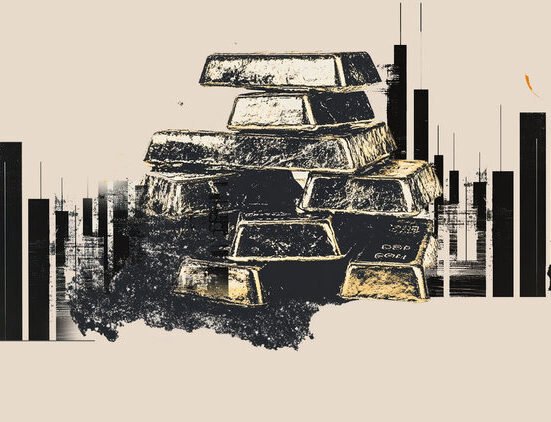After years of diving into risky assets at every sign of trouble, investors are starting to move some of their money in the other direction — toward safety.
Flows into exchange-traded funds tracking gold, ultra-short Treasuries and low-volatility stocks have jumped to their highest since March 2023, data compiled by Bloomberg Intelligence show, amid concern a global trade war represents a lasting threat to economic and earnings growth.
In total, the three groups saw US$18 billion of inflows so far in April, with cash-like funds taking in around two-thirds. The SPDR Bloomberg 1-3 Month T-Bill ETF (ticker BIL) has taken in $8 billion so far, followed by iShares Short Treasury Bond ETF (SHV) and iShares 1-3 Year Treasury Bond ETF (SHY) at $3 billion and $1 billion, respectively. Gold-related funds saw three straight months of inflows while low-volatility equities saw traders pile in after an almost two-year exodus.
Risk-off sentiment worsened Monday as concern about future Federal Reserve independence spurred a selloff in U.S. equities, the dollar and long-dated Treasuries. The S&P 500 Index fell 3 per cent Monday.
President Donald Trump warned the U.S. economy may slow if the central bank doesn’t move to immediately reduce interest rates, his latest broadside against Fed Chair Jerome Powell. Haven assets such as the Swiss franc and Japanese yen rose.
“The market is searching for policy clarity out of Washington and it remains elusive,” said Ryan Grabinski, senior investment strategist at Strategas Securities. “Consumers, businesses and even the Fed are hesitant to make major decisions because so much is unknown.”
To be sure, traders of all stripes continue to plow cash into broad-based index-hugging funds with inflows hovering above average levels. Atop the leaderboard is the iShares Core S&P 500 ETF (IVV), which has hauled $35 billion alone in the past month.
“We continue to see signs of caution but not panic,” said Cayla Seder, a macro multi-asset strategist at State Street Global Markets. “At a high level this looks like less flows going into equities and more demand for both fixed income and cash. All things considered, if hard data start to weaken, there’s more room to seek shelter.”
Elsewhere, traders continue to pile into the riskiest corner of the market, with shares outstanding across the top 50 levered ETFs ranked by assets having risen 20 per cent since Trump’s so-called Liberation Day on April 2.
“The buy-the-dip mentality of investors remains,” Mark Hackett, chief market strategist at Nationwide, said. “Despite near record levels of pessimism, retail investors continue to buy.”
Isabelle Lee, Bloomberg News
–With assistance from Vildana Hajric and Eric Balchunas.
©2025 Bloomberg L.P.







